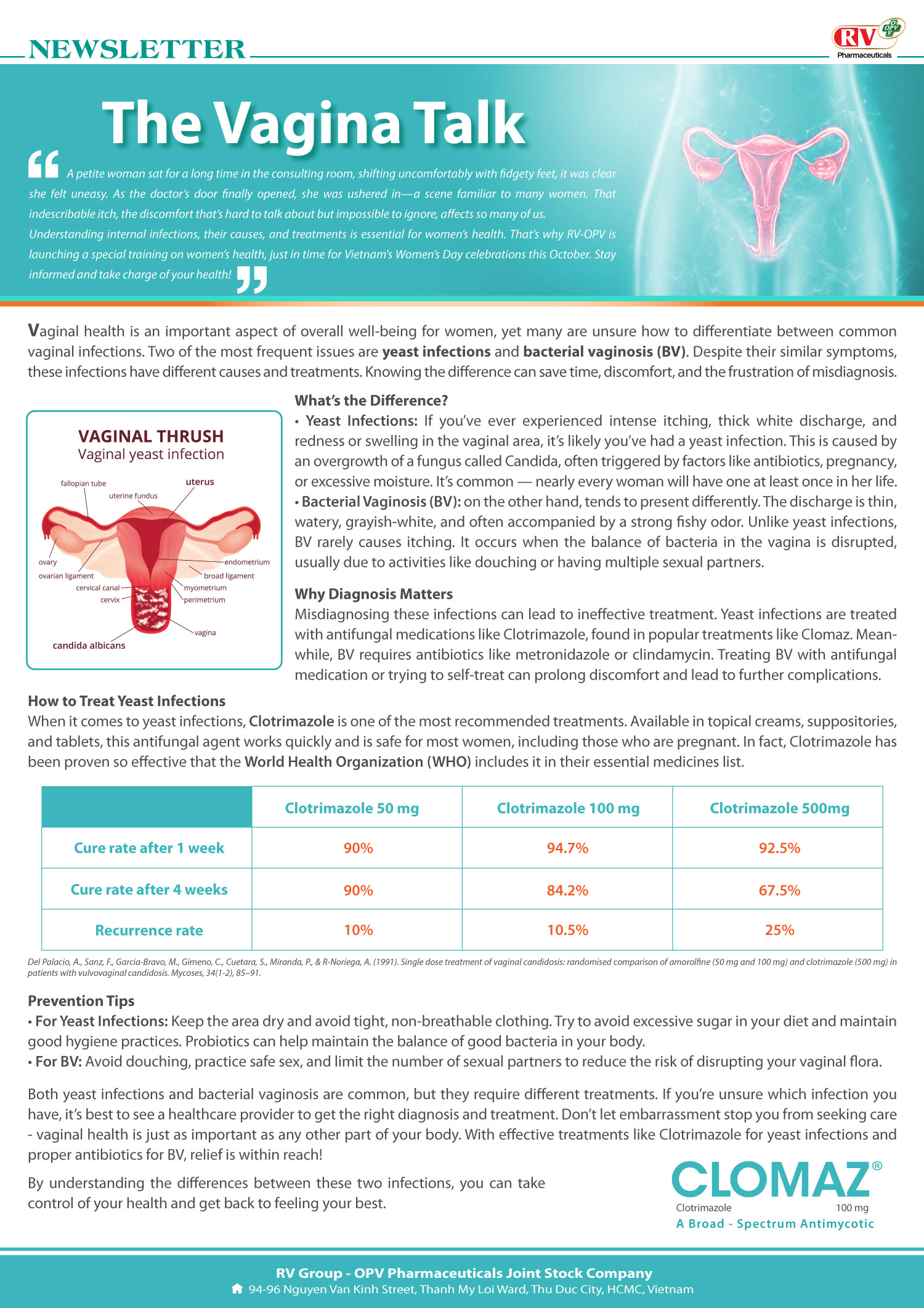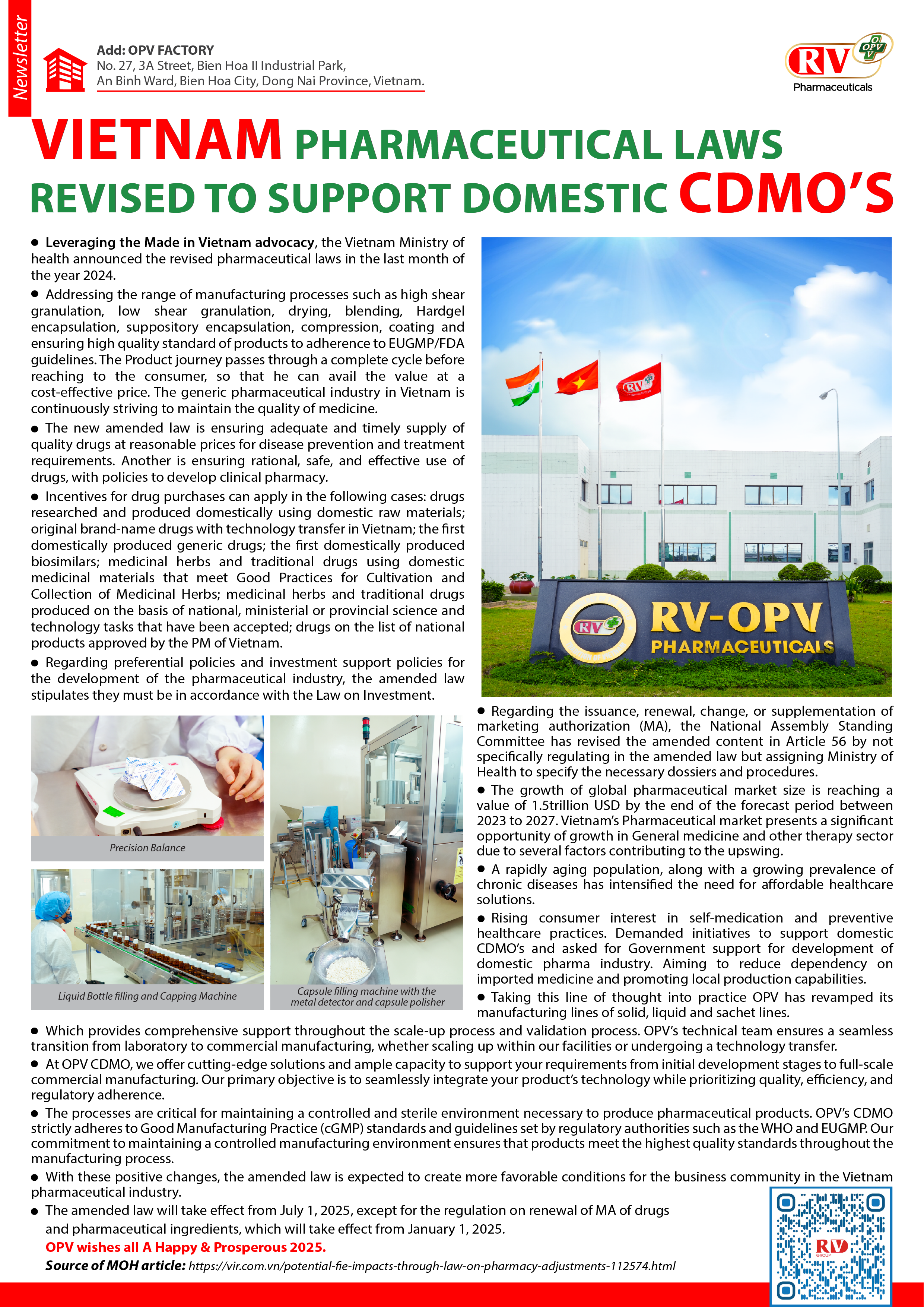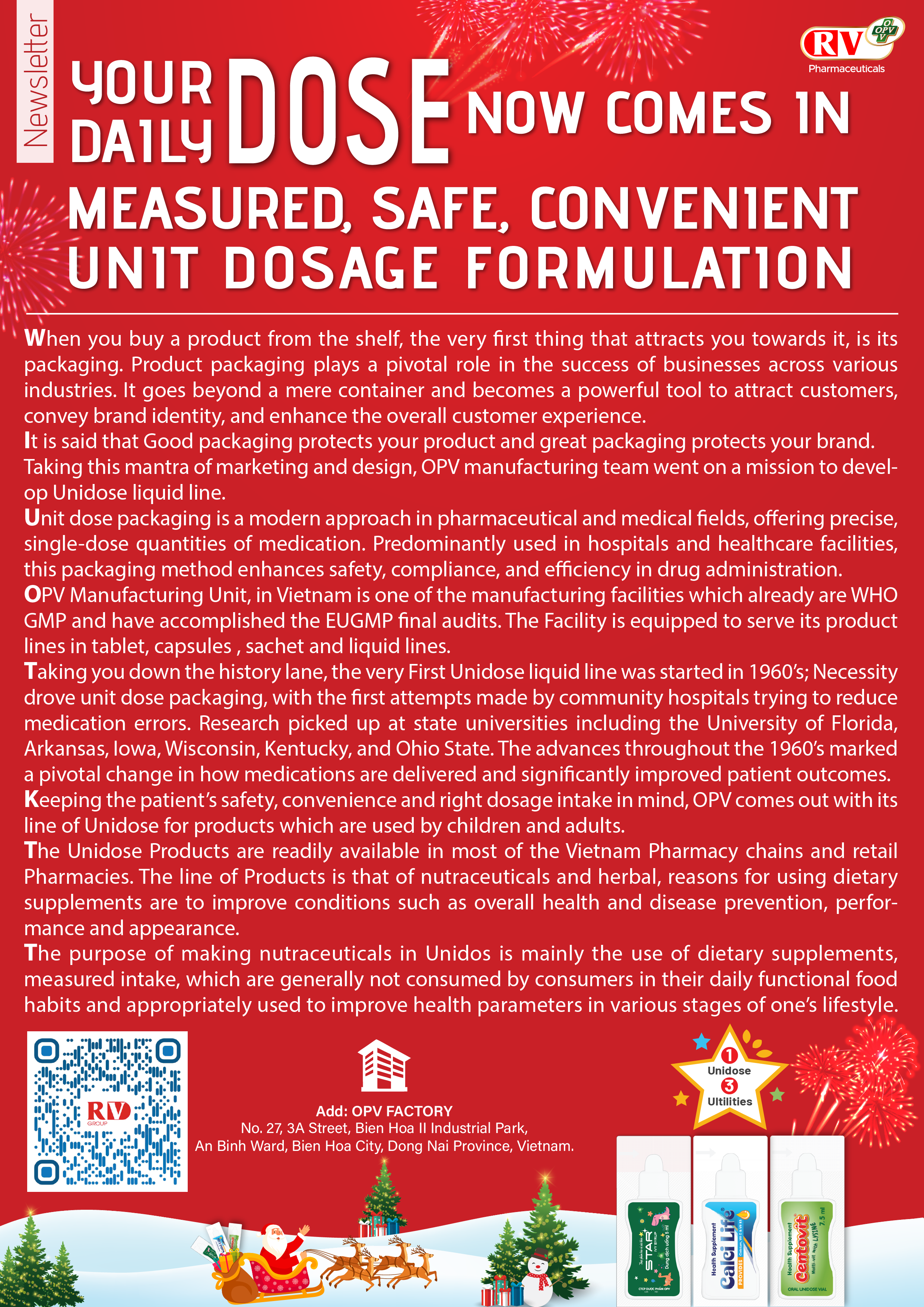The Vagina Talk
A petite woman sat for a long time in the consulting room, shifting uncomfortably with fidgety feet, it was clear she felt uneasy. As the doctor’s door finally opened, she was ushered in—a scene familiar to many women. That indescribable itch, the discomfort that’s hard to talk about but impossible to ignore, affects so many of us.
Understanding internal infections, their causes, and treatments is essential for women’s health. That’s why RV-OPV is launching a special training on women’s health, just in time for Vietnam’s Women’s Day celebrations this October. Stay informed and take charge of your health!
Vaginal health is an important aspect of overall well-being for women, yet many are unsure how to differentiate between common vaginal infections. Two of the most frequent issues are yeast infections and bacterial vaginosis (BV). Despite their similar symptoms, these infections have different causes and treatments. Knowing the difference can save time, discomfort, and the frustration of misdiagnosis.
What’s the Difference?
- Yeast Infections: If you’ve ever experienced intense itching, thick white discharge, and redness or swelling in the vaginal area, it’s likely you’ve had a yeast infection. This is caused by an overgrowth of a fungus called Candida, often triggered by factors like antibiotics, pregnancy, or excessive moisture. It’s common — nearly every woman will have one at least once in her life.
- Bacterial Vaginosis (BV), on the other hand, tends to present differently. The discharge is thin, watery, grayish-white, and often accompanied by a strong fishy odor. Unlike yeast infections, BV rarely causes itching. It occurs when the balance of bacteria in the vagina is disrupted, usually due to activities like douching or having multiple sexual partners.
Why Diagnosis Matters
Misdiagnosing these infections can lead to ineffective treatment. Yeast infections are treated with antifungal medications like Clotrimazole, found in popular treatments like Clomaz. Meanwhile, BV requires antibiotics like metronidazole or clindamycin. Treating BV with antifungal medication or trying to self-treat can prolong discomfort and lead to further complications.
How to Treat Yeast Infections
When it comes to yeast infections, Clotrimazole is one of the most recommended treatments. Available in topical creams, suppositories, and tablets, this antifungal agent works quickly and is safe for most women, including those who are pregnant. In fact, Clotrimazole has been proven so effective that the World Health Organization (WHO) includes it in their essential medicines list).
|
Clotrimazole 100 mg | Clotrimazole 500mg
|
|||||
|
90% | 94.7% | 92.5% | ||||
|
80% |
|
67.5% | ||||
|
10% | 10.5% | 25% |
Prevention Tips
- For Yeast Infections: Keep the area dry and avoid tight, non-breathable clothing. Try to avoid excessive sugar in your diet and maintain good hygiene practices. Probiotics can help maintain the balance of good bacteria in your body.
- For BV: Avoid douching, practice safe sex, and limit the number of sexual partners to reduce the risk of disrupting your vaginal flora.
Both yeast infections and bacterial vaginosis are common, but they require different treatments. If you’re unsure which infection you have, it’s best to see a healthcare provider to get the right diagnosis and treatment. Don’t let embarrassment stop you from seeking care — vaginal health is just as important as any other part of your body. With effective treatments like Clotrimazole for yeast infections and proper antibiotics for BV, relief is within reach!
By understanding the differences between these two infections, you can take control of your health and get back to feeling your best.






